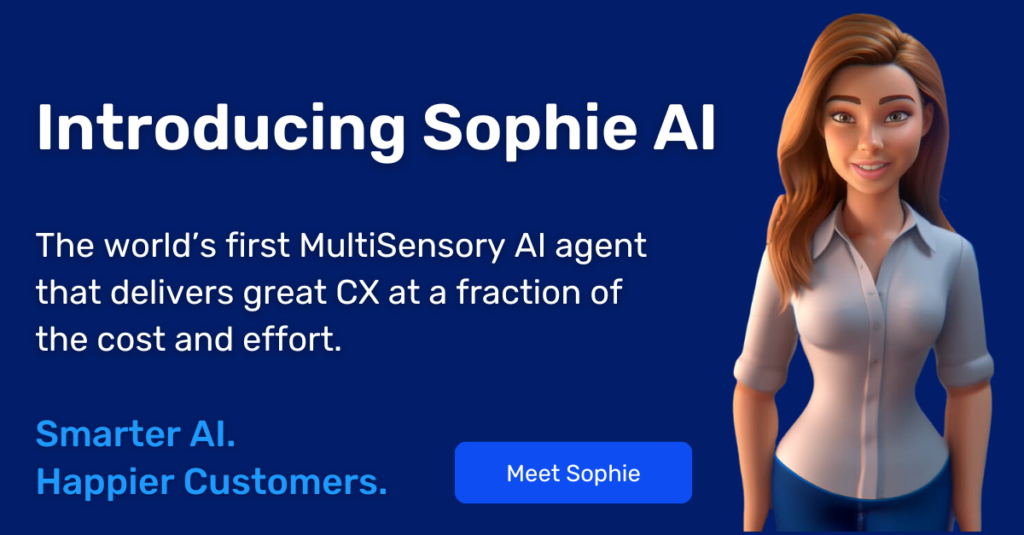Contents
Many common customer issues can be easily predicted. An expired credit card means a payment won’t go through. A purchase of a complex smart device means installation guidance will be needed. A coffee machine that’s in daily use will require maintenance after a year or so. If these problems can be anticipated, they can be prevented with Next Issue Avoidance.
Contact centers are perfectly placed to predict imminent customer queries. They’re already armed with a wealth of data about the actions customers have or haven’t taken along their journeys and the issues that are likely to arise in the near future. Take billing as an example: customers who purchase a subscription often call in after they receive the first invoice to question the amount. For that reason, many companies now take proactive steps to prepare the customer for what to expect, either at the point of sale or before the bill arrives. This simple tactic avoids unpleasant surprises that can lead to customer churn.
Next Issue Avoidance Uses Existing Data to Predict Likely Problems
Next Issue Avoidance (NIA) is a metric used by a growing number of customer service departments, one that encourages and enables agents to predict likely problems. By analyzing data from large sets of trouble tickets, organizations can anticipate customers’ next questions and eliminate huge volumes of future contacts. With 40% of all calls considered “next issues” following initial contacts, NIA is now a critical strategy for reducing customer effort, reducing pressure on contact centers and increasing loyalty.
NIA: The balancing metric
NIA is measured by tracking the number of repeat calls a contact center receives within a specific period of time. This metric is used in conjunction with standard metrics like Average Handle Time (AHT) and First Contact Resolution (FCR) which track the contact center agent’s speed and efficiency per call. While these metrics are certainly critical in terms of ensuring contact center productivity, they do not take into account the customer’s overall experience.
For example, if a customer calls in to complain about a faulty product and the agent instantly agrees to refund the purchase price, FCR and AHT may be boosted. However, if the customer has to call back an hour later because they are unsure how to ship the product back, their customer experience has been severely impacted.
A Few Extra Questions are Worth the Time
In fact, FCR often fails to tell the full story of the interaction. While companies’ data often shows a high FCR rate, many times customers report that their issues did actually require a follow-up contact. This increases effort on the part of the customer and puts a serious strain on resources for the contact center. However, 46% of customer support cases could have been avoided if the company had predicted the next potential problem.
Taking a few minutes to ask the customer a couple of extra questions could save the contact center several lengthy calls in the future.
Taking a few minutes to make sure that everything is clear and understood by the customer will avoid them calling up again for another phone call, likely upset and frustrated. While it’s true that in the short term, the extra questions could increase AHT, in the long term it will lower call center volume, improve Customer Effort Score (CES) and increase customer loyalty.
Tactics for effective Next Issue Avoidance
Below are seven tactics to use in order to effectively take Next Issue Avoidance on board in your contact center.
Enhance agent training
Make available robust documentation including common troubleshooting topics and related follow-up questions. Clarify for agents the importance of predicting future questions or problems and make Next Issue Avoidance a part of an agent’s range of KPIs.
Reconsider time-based KPIs
If agents have their eye on the clock because they are rushing to meet their AHT targets, they are missing out on a golden opportunity to ensure a greater degree of customer satisfaction through NIA. Make sure that traditional metrics are carefully balanced with NIA and CES.
Use readily available data
Take advantage of the features of your CRM system to check a customer’s historical data and past interactions in order to tailor the conversation. For example, when a customer calls in complaining about the incompatibility of a new device with his home system, the agent can check the compatibility of other ordered products and, if necessary, offer to refund both at the same time.
Improve self-service options
With the majority of customers now preferring to solve product issues themselves rather than calling a contact center, the age of self-service has finally arrived. Self-service channels can be programmed to lead the customer through a series of steps that answer all their questions. Customers can even be prompted to access them at the most appropriate times.
For example, every three months a water company customer might be prompted to access the “how to change my filter” page on the supplier’s website. Or if a user is looking at an online help document, they can be guided toward related articles and video tutorials to broaden their knowledge and avoid future calls to customer service.
Poll your agents
The best place to start planning an effective NIA strategy is by asking your frontline personnel. They can identify numerous common follow-up requests that could be better handled the first time around. For example, agents might offer insights into which company communications are unclear, based on the number of people who contact the company to clarify them afterwards.
Deploy effective technology
Leverage contact center technologies such as voice analysis to study conversations and figure out drivers of repeat calls. Emotion detection can be used to match customers with agents who are best suited to their personalities, resulting in more effective interactions.
Keep it simple
Don’t overburden the customer with too much information about future issues. Mention only the very next issue, and not a whole slew of potential problems down the road. Providing too much information increases the cognitive load on the customer, and that defeats the purpose of providing an easy, effortless experience.
How Visual Assistance enables NIA
In many industries, from telecom and consumer electronics to utilities and insurance, larger numbers of interoperable devices means more potential for technical issues to crop up. And for these complex customer issues, or when forward-resolving an issue is hard to explain, Visual Assistance technology is emerging as a highly effective solution.
It allows an agent to see the customer’s physical environment via their smart device and visually guide them toward issue resolutions using on-screen annotations. They can also see and anticipate future technical issues that are outside the scope of the initial contact – and show the customer how to address them.
For example, a customer calls a smart home provider to ask for help installing a new router. As the agent guides them through the process, he asks to see the surrounding area and notices that the customer’s A/C unit is just a couple of feet away – a known cause of signal interference. By advising the customer to move the router to a safer spot, the agent achieves Next Issue Avoidance and creates a loyal customer.
NIA: It’s Crucial to Think Ahead to Avoid Issues Later
With the growing costs of delivering customer service and support, NIA is a crucial element of any effective strategy. By applying the right approaches and technologies, companies can now anticipate and address potential issues, reducing contact center volume, cutting customer effort, and increasing loyalty.







